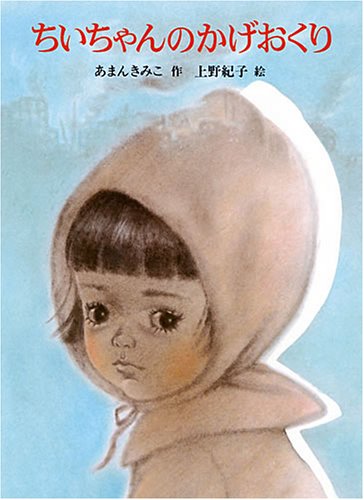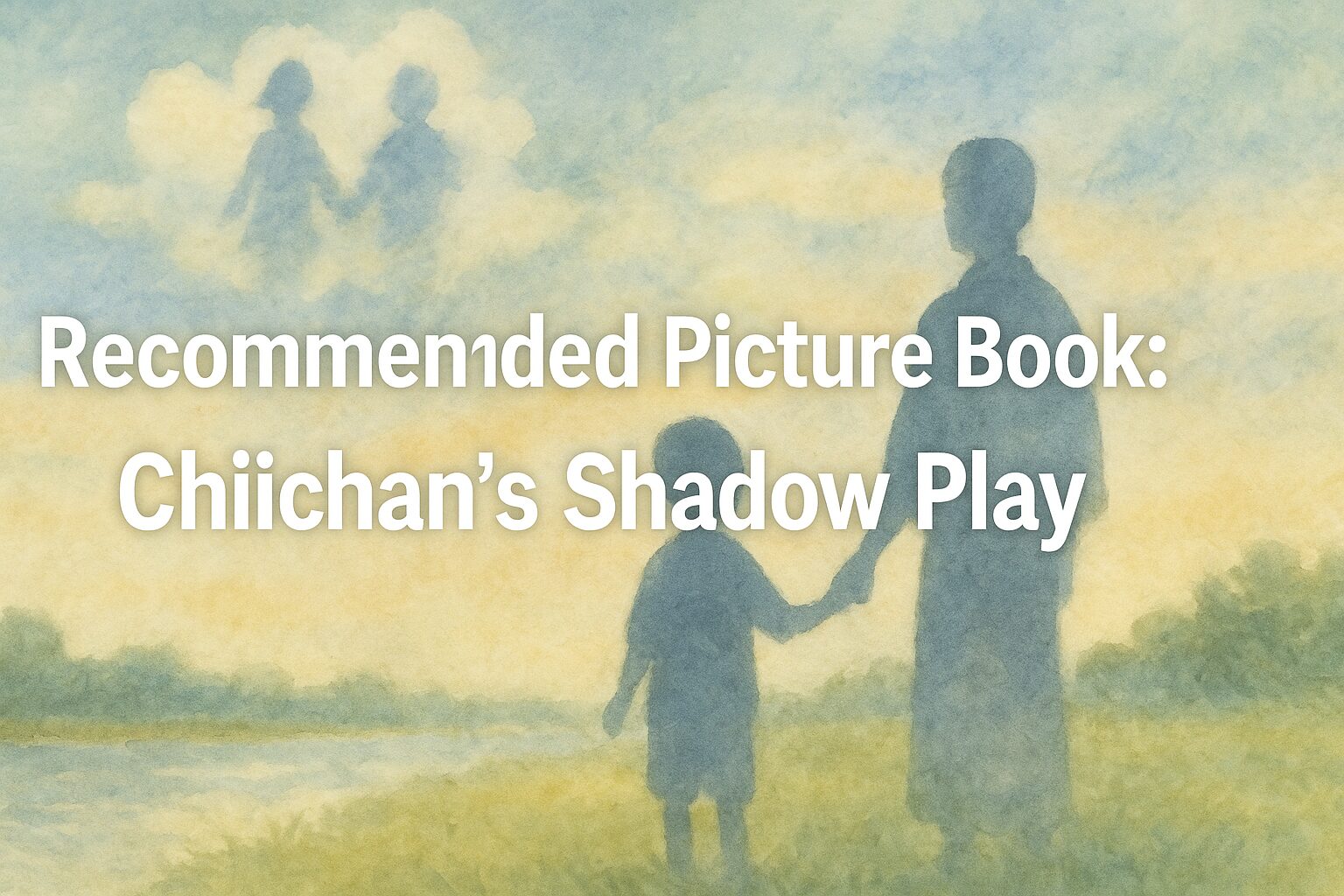Introduction
“Chiichan’s Shadow Play” is a timeless picture book that gently conveys the tragedy of war to children. Through a simple family activity—sending shadows off to the clouds—life changes forever in one sudden moment. Generations of readers have been deeply moved by this story. In this post, you’ll find an overview of the book, publication details, target age group, sales figures, and heartfelt reader impressions, all presented in a gentle tone.

Book Details
- Author: Kimiko Aman
- Illustrator: Noriko Ueno
- Publisher: Akane-shobo
- First Edition: August 1982
- Page Count: 56 pages
- Size: Approximately 25.8 × 19 cm
- ISBN: 4251030117
- Price (at publication): ¥1,300 + tax
Synopsis
One summer morning, little Chiichan and her family gather by the riverside for a game called “shadow play.” Holding hands and looking up at the sky, they send their shadows off to the clouds. But that peaceful moment is shattered when an incendiary bomb falls from the sky, forever changing Chiichan’s world in an instant. The story’s quiet, straightforward narration reveals the horrors of war and the preciousness of life.
What Makes This Book Special
- A Child-Friendly Portrayal of War
Without assuming any prior knowledge of wartime events, the book centers on the familiar family activity of “shadow play.” Although the ending is tragic, the narrative never becomes overwhelmingly shocking, making it accessible for young readers. - Kimiko Aman’s Thoughtful Language
Every sentence is concise, with extra embellishments removed. This minimalism draws readers’ attention to the illustrations and the emotions on Chiichan’s face. For example: “Chiichan held her father’s and mother’s hands tightly and looked up at the sky.” Even this single line conveys warmth and security. - Noriko Ueno’s Gentle Illustrations
Soft, muted colors capture the hazy summer days and the loving expressions of Chiichan’s family. The moment before the bomb falls is depicted without dramatic smoke or flames, allowing even young children to experience the story without terror.
Publication Date & Recommended Age
- First Edition: August 1982
- Recommended Age: 8 years old and up (lower to middle elementary school)
- Because the book has appeared in elementary school language-text textbooks, it is designed so that students who have never experienced war can still fully understand the story.
Sales & Why It’s a Long Seller
Although exact numbers aren’t publicly available, multiple reprints over the decades have pushed total circulation into the hundreds of thousands.
Reasons for Long-Seller Status:
- It helps carry forward memories from “those who experienced war” to “those who never did,” making it an important educational tool.
- Author Kimiko Aman’s reputation—her many works that resonate with children’s hearts—adds trust and power to this book.
- Since the 2011 Great East Japan Earthquake, parents and teachers have searched for stories that emphasize the value of life, leading to renewed interest in “Chiichan’s Shadow Play.”
Reader Impressions (Selected)
- “It’s a short children’s book, yet it conveys the horror of war so powerfully. Every time I turn the page, my heart tightens, and I want to read it again and again.”
- “I didn’t experience war, but I couldn’t stop crying after reading this. Chiichan’s smile feels even more bittersweet, and it made me reflect deeply on how precious family is.”
- “When my class first encountered this book in school, my classmates and I all shed tears together. Even though we’ve never seen war, Chiichan’s shadow play taught us how important peace really is.” (From an online forum)
These impressions show that people of all ages—children and adults—are moved by the same emotional impact, learning about both the horror of war and the value of life.
In-Depth Analysis
1. The Meaning of “Shadow Play”
On a hot summer day, families stand in rice fields or by a river. Holding hands so they don’t let go, they tilt their hands upward to send their shadows onto the clouds—this is called “shadow play.” It symbolizes family unity and comfort.
2. Setting & Wartime Context
The story takes place near the end of the Pacific War. Sirens wail as children try to enjoy a carefree summer vacation. Yet incendiary bombs fall from the sky, taking countless innocent lives—many of them young children. Chiichan’s peaceful family moment is shattered by this tragic reality.
3. Choice of Words & Lasting Impression
Brief, understated lines leave room for the reader’s imagination. For example, the moment the incendiary bomb falls is described in just one simple sentence. The aftermath is not revealed until you turn the page, creating a pause that deepens the emotional impact.
4. The Power of the Illustrations
Noriko Ueno’s soft style captures the warmth of family life on a summer day. The contrast between Chiichan’s cheerful “shadow play” and the impending explosion underscores the cruelty of war without graphic imagery.
5. Educational Significance
As part of elementary school language textbooks, the book is widely used to teach younger generations—who’ve never experienced war—about the importance of peace. Teachers often follow reading with class discussions: “Why is it important to protect life?” and “What can we do to prevent war from happening again?”
Conclusion: Who Should Read This Book
- Anyone who wants to teach children about the tragedy of war in an age-appropriate way.
- Parents of lower- to middle-grade elementary school students who wish to share a gentle yet powerful story.
- Teachers and caregivers looking to use read-alouds to discuss the value of life and peace.
- Adult readers who seek a quietly moving experience.
Through its simple language and soft-hued illustrations, “Chiichan’s Shadow Play” does more than recount historical events—it leaves a lasting impression about the preciousness of family and life. We hope you and your loved ones will experience this story together.
References & Citations
- Publication & Recommended Age • Kimiko Aman / Noriko Ueno, “Chiichan’s Shadow Play,” First Edition August 1982
- Illustration Info & Product Page • Akane-shobo website
- Reader Reviews • Note: “Picture Book Review: Chiichan’s Shadow Play”
- Additional Reader Impressions • Ehon Navi (picturebook-navi.jp)



comment Please enter a comment.